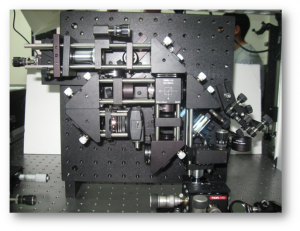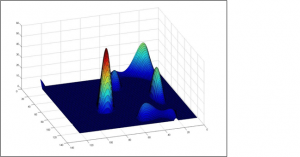- We develop metal nanoparticles to label targets of interest in cells.
- The nanoparticles are excited by a laser with a wavelength which suits their peak plasmonic resonance, and thus creates phase signatures that can be detected by IPM.
Application: Alzheimer’s Disease (AD):
- Functionalizing the nanoparticles to bind amyloid beta, created during AD.
- Imaging it in 3-D using photothermal optical coherence microscopy (OCM).
- Simultaneously imaging neurons by wide-field IPM and checking how they are affected by amyloid beta presence.
|
 |
|
Phase of 55-nm gold nanospheres,
detected by wide-field photothermal IPM
|
 |
Project funded by the German-Israeli Foundation (GIF)

